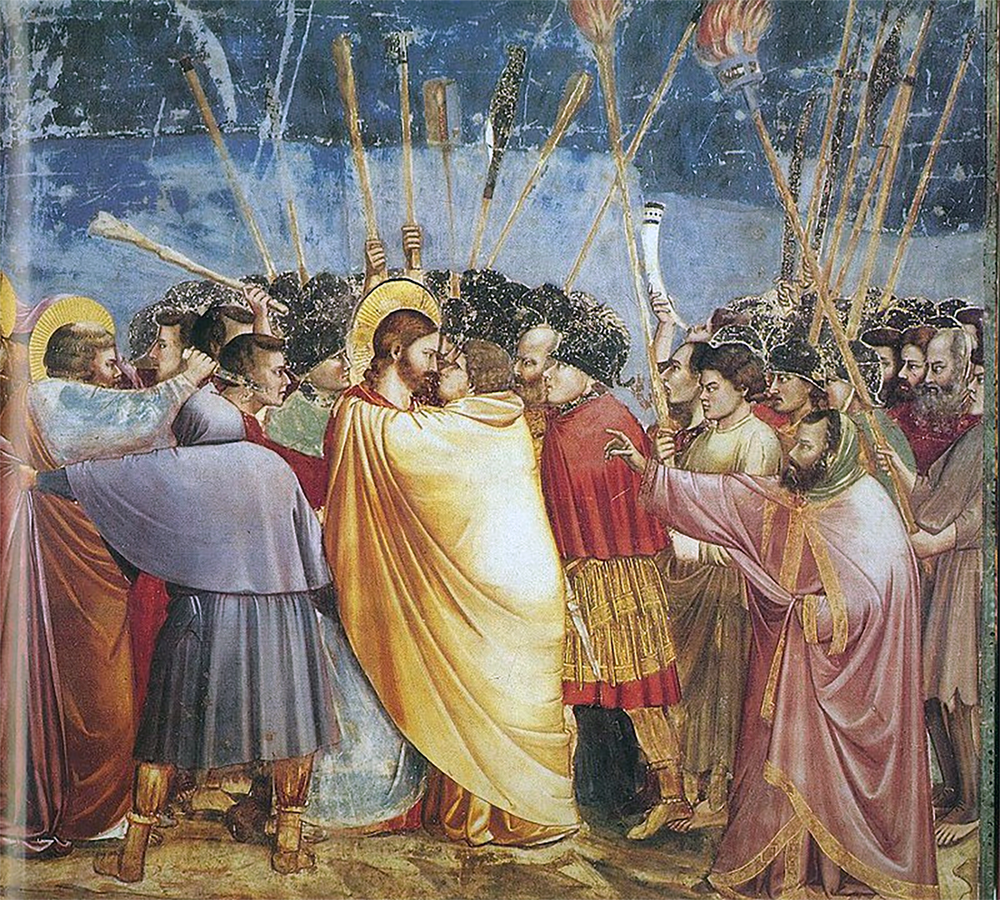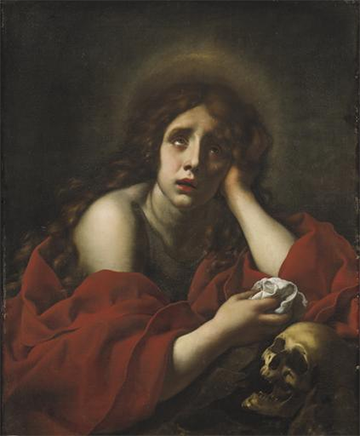The 1970 rock opera Jesus Christ Superstar is Andrew Lloyd Webber and Tim Rice’s collaborative retelling of the Christian gospel from the perspective of Judas. The musical shocked traditional Christians with its Judas-centric perspective and its emphasis on Jesus’ humanity. Many were not comfortable with a story of Jesus that was not in line with the received canonical tradition that largely favored an emphasis on Jesus’ divinity. Because Superstar wasn’t framed according to traditional interpretations handed down for centuries, it was therefore deemed “suspect” and even “blasphemous” by the guardians of orthodox Christianity, although thousands have come into greater awareness and appreciation—and even love—of the story of Jesus through Judas’ eyes and the music of that opera. “I Don’t Know How to Love Him,” as sung by Mary Magdalene in the musical, and the refrain sung later by Judas, is probably one of the most often re-recorded songs from the opera, and is a paean to the simultaneous exhilaration and depth of anguish we feel in the net of love. (https://www.youtube.com/watch?v=DM3dYCp-op8)
Telling a story—any story—necessarily requires a perspectival account. Jesus’ story is no exception. Four canonical gospels (Mark, Matthew, Luke and John), epistles and other writings, selected from among hundreds extant over the period of the formation of the Christian canon, demonstrate the wide diversity of perspectives available in nascent Christianity. Who was Jesus and what did he mean? What was the significance of his life and death? How did the gospel redactors frame Jesus’ story to communicate contoured, nuanced meaning for their intended audiences?
Scholars have long noted that Nicene Christianity, marked by the climactic and contentious Council of Nicea, 325 C.E., was a long-fought, deeply divisive theological process, and that interpretations subsequent to what became “mainstream” Christianity were fraught with charges of heresy thereafter. In many cases, when scholars set out to study a wide spectrum of early Christian perspectives, the only texts available for many centuries were those cited by the “winning side,” whose accounts of their opponents’ perspectives were often grossly misinterpreted and subsequently often suppressed or snuffed out of existence by the victors. With the discovery of many early Christian writings that were not merely quoted from traditional Christian sources hostile to their meanings, but from extant manuscripts themselves, we have begun to piece together a broader spectrum of early Christianity and diverse interpretations of Jesus’ story. We can frame the stories of Jesus from the Christian Scriptures with these many, varied, so-called apocryphal works, without dismissing them as “heterodox,” and therefore, invalid interpretations, at the outset.

“The Kiss of Judas” by Giotto di Bondone (1267–1337)
When the extant manuscript of the Gospel of Judas (2nd c. C.E.) was published in English in 2006, it caused a less-than-spectacular commotion. Like other Gnostic works produced in early Christianity that emphasized “gnosis,” a secret knowledge, the Gospel of Judas was regarded as “heretical,” “outside the canon” and of no consequence for believers, according to some Church authorities. In 180 C.E., Church Father Irenaeus of Lyons had decried such Gnostic texts in his Adversus Haereses (Against Heresies) as fictitious and contrary to Church teachings. Like other Gnostic works of the era, the Gospel of Judas depicts the Gnostic teacher, Jesus, in secret communication with the titular hero of the text. Whether it was other gospels featuring Mary Magdalene, Thomas, Philip, Peter, or in this case, Judas, the gnostic teaching was bestowed by Jesus upon the favored disciple, while the mysteries remained hidden from the other disciples. In the case of the Gospel of Judas, Judas, rather than being the ignominious traitor of ill-repute, was regarded as the one who secretly understood Jesus’ mission and was able to serve the mission by handing him over—at Jesus’ behest—to the authorities, to “sacrifice the man that clothes me,” as Jesus insists. Judas was not perceived as a turn-coat traitor, in other words, but an instrument of salvation.
It all depends on perspective, how we frame it.


“The Penitent Mary Magdalene” by Carlo Dolci (1616–1686)
For centuries, the Christian disciple known as Mary Magdalene has been similarly sullied in received Christian tradition as the “prostitute”-turned-saint when the canonical gospels themselves do not corroborate that depiction. Instead, the canonical gospels celebrate Mary Magdalene as the disciple who followed Jesus faithfully until the end, remaining at the foot of the cross with the other women disciples. In John’s account, Mary is actually the “apostle to the apostles,” first receiving the Good News of the Resurrection and then being sent to tell the men by the risen Jesus himself (John 20:11–18). She didn’t “change” her vocation from “sinner to saint.” How did her story get so botched? Luke 8:2 describes Mary from Magdala as the woman from whom “seven demons had gone out,” and that tidbit might have started the most convoluted game of telephone in the history of Christianity. Mary is later confused with the woman who anointed Jesus, and then in a fantastical conflation by a later Church patriarch, Gregory the Great (1591) in his 23rd Homily, who labeled her—perhaps quite innocently—as the “sinful” woman who anointed Jesus. He noted “it is clear, brothers, that the woman previously used the unguent to perfume her flesh in forbidden acts” (“Who Framed Mary Magdalene?” https://uscatholic.org/articles/201603/who-framed-mary-magdalene/). Since the early Gnostic apocryphal Gospel of Mary Magdalene celebrated Mary’s special relationship with Jesus as his premier disciple and ultimate companion, it was understandable why a thoroughly twisted tradition about Mary’s former “occupation” became mainstream. It has endured, despite a spate of scholarly attempts to untie the knots and clear her name of any association with a scarlet harlot.
It all depends on perspective, how we frame it.
 Can there be a “correct” and “only” story? Perhaps, if we had the “omniscient eye.” If Christians claim that the canonical gospels—plural—and they alone, are God’s story, then how might we interpret God’s framing of Jesus’ story? The canonical portraits themselves are remarkable for their distinct renderings. Mark’s Jesus—the Suffering Servant; Matthew’s Jesus—the misunderstood Jewish Messiah, greater than Moses and Elijah combined; Luke’s Jesus—Savior for the Gentiles; and John’s (pseudo-Gnostic) Jesus—the Word-made-flesh … They all paint extraordinarily different portraits. Whose “framing” is most historically accurate? Most theologically compelling? Most appropriate for today’s context? Most appropriate for those for whom the gospel message is “good news?” If we say, “all together,” we must still contend with those four perspectives in the context of the many others that frame early Christianity. We must pay attention to the framing in order to discover what is placed as central, and what is on the edges.
Can there be a “correct” and “only” story? Perhaps, if we had the “omniscient eye.” If Christians claim that the canonical gospels—plural—and they alone, are God’s story, then how might we interpret God’s framing of Jesus’ story? The canonical portraits themselves are remarkable for their distinct renderings. Mark’s Jesus—the Suffering Servant; Matthew’s Jesus—the misunderstood Jewish Messiah, greater than Moses and Elijah combined; Luke’s Jesus—Savior for the Gentiles; and John’s (pseudo-Gnostic) Jesus—the Word-made-flesh … They all paint extraordinarily different portraits. Whose “framing” is most historically accurate? Most theologically compelling? Most appropriate for today’s context? Most appropriate for those for whom the gospel message is “good news?” If we say, “all together,” we must still contend with those four perspectives in the context of the many others that frame early Christianity. We must pay attention to the framing in order to discover what is placed as central, and what is on the edges.
As we continue to reflect on the paschal mysteries these days, how do we find ourselves framing the story of Jesus? How does the story frame us? Whose Jesus do we cling to and in what context? What frames our own reading/hearing/receiving of the Gospel itself?
How do we “frame” those who hurt us? How do we frame those who are dear to us? How do we frame those who we don’t even know? What about our creature-kin? What about all of creation? Do we frame “others” as “others” only, or do we include them in the same frame as ourselves?
What if we switch the hermeneutical lens? What if we are not the guarantors of ultimate meaning and cease foisting our own meaning onto others? How might the story of humanity be heard if written from the perspective of slaves and indigenous peoples? What if we admitted that the dominant, winning interpretation, or the loudest, and most repeated interpretations, are also deficient without the perspectives of those in the margins, at the edges or altogether traditionally excluded?
If God were to frame our story, how would God paint us? Sinners-turned-saints? Villains and traitors, wretched losers, or inside-secret-keepers and instruments of salvation? Creation-gone-awry, or creation-coming-into-fulfillment?
Something tells me God frames us with Love. No matter the interpretation of how we are doing on this 13.7-billion-year journey, we are framed with Love.
“‘And you shall love the Lord your God with all your heart, and with all your soul, and with all your mind, and with all your strength.’ The second is this: ‘You shall love your neighbor as you love yourself.’ There is no other commandment greater than these” (Mark 12:30–31).
We are in a relationship of Love—an excellent way to frame the story, isn’t it?
How might we frame others—and all creation—with that same Love?
 —Laura Weber, Prairiewoods associate director and retreats coordinator
—Laura Weber, Prairiewoods associate director and retreats coordinator


